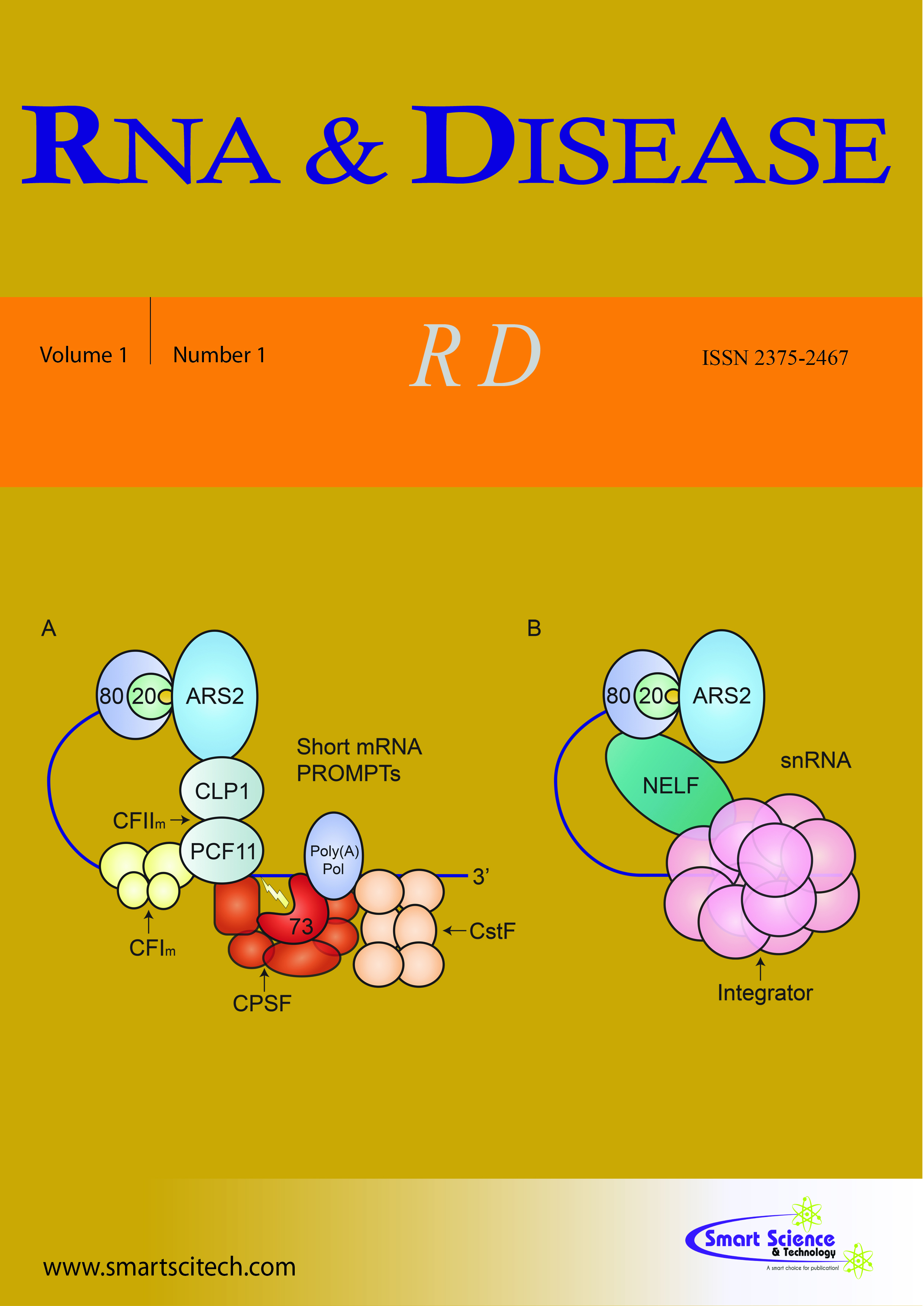miRNAs as tools for tailoring personalized therapeutic strategies in ovarian carcinoma
DOI: 10.14800/rd.717
Abstract
Ovarian carcinomas are associated with an extremely poor prognosis, resulting in a 5-year survival of 30% for advanced-stage disease. Unlike other malignancies, no significant improvement in disease management and overall survival has been achieved in the past three decades, underlining the urgent need of new therapeutic opportunities. Bcl-xL and Mcl-1 are gateway proteins guarding together against apoptosis in ovarian cancer. Given that miRNAs target the expression of several genes, in a coordinated manner, often at the nodes of important regulatory pathways, we hypothesized that among miRNAs able to kill chemoresistant ovarian cancer cell lines some may target both Bcl-xL and Mcl-1. Recently, we demonstrated that miR-491-5p induces apoptosis in several ovarian cancer cells by inhibiting directly Bcl-xL and indirectly Mcl-1 through the targeting of EGFR leading to BIM activation. Interestingly, the apoptotic effect of miR-491-5p could be mimicked by a combination therapy of an EGFR inhibitor with a BH3?mimetic molecule (two drugs already used in clinical practice). In addition, the knowledge of the precise molecular effect of miR?491-5p provided ways to identify downstream genetic alterations impeding the pro?apoptotic effect of miR-491-5p in another cellular context. The resistance to this combination treatment was finally counteracted by associating pharmacological molecules affecting the involved pathways at pertinent levels. Altogether, our work highlights the potential of phenotype-based miRNA screening approaches to decipher, in the absence of a preconceived idea, new relevant therapeutic targets harboring synthetic lethal interactions to finally propose new rationale drug combinations.












